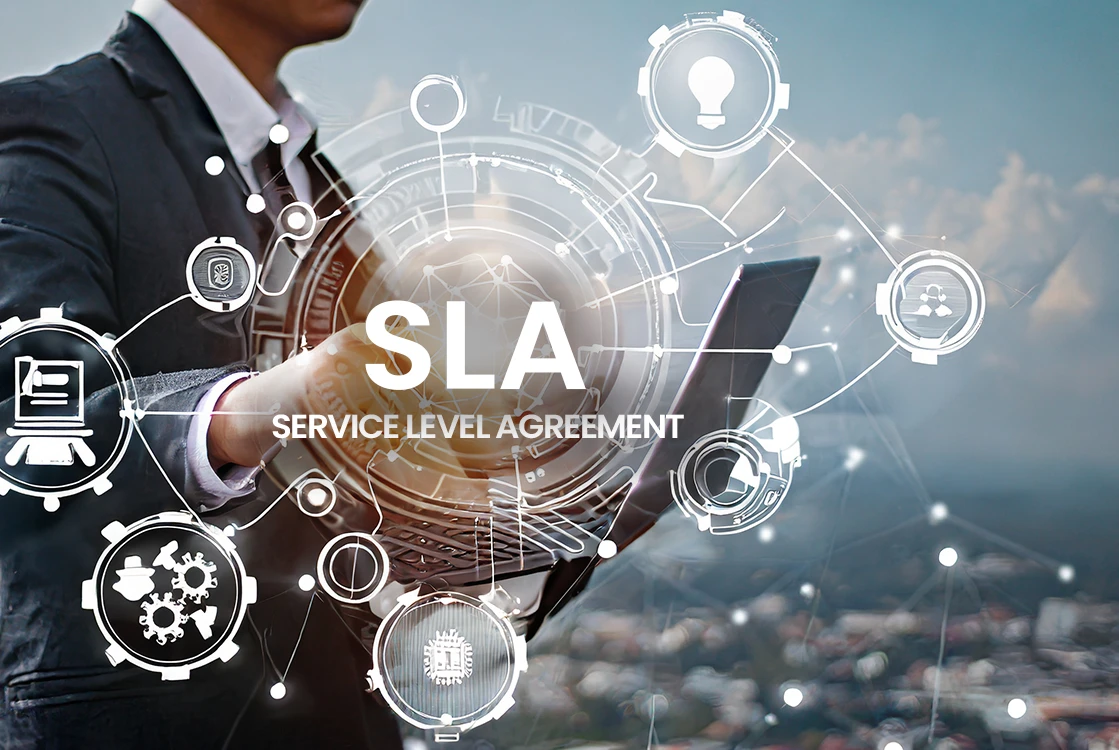Service Level Agreements (SLAs) are tools that define the commercial and contractual relationships between service providers and clients. These agreements outline the expectations, responsibilities, and performance parameters that the involved parties must adhere to. SLAs are used in a wide range of sectors and applications, ensuring that services are delivered efficiently and in accordance with agreed-upon standards. This article will explore in detail what an SLA is, the different types, the content, the steps for creation, as well as the implementation and revision of these agreements.
What is an SLA
An SLA, or Service Level Agreement, is a formal agreement between a client and a service provider that defines expected service levels and response times. SLAs are widely used in various contexts as all sectors can benefit from establishing an agreement on the level of service provided. Here are some examples:
- IT Services: in the IT sector, SLAs define parameters for uptime, response time, and issue resolution for systems and applications. The IT sector represents the historical domain of SLA application.
- Cloud Services (Hosting and Cloud Services): SLAs are defined to ensure the availability of data and resources and to specify response times for client requests and technical support.
- Call Centers and Customer Service: SLAs govern response times to customer requests and assess the quality of support provided.
- Logistics and Transportation: SLAs are defined to ensure timely delivery of goods and attention to the quality of the delivery service.
- Financial Services: SLAs define transaction processing times, data security, and regulatory compliance.
In addition to this list, some services related to field intervention management, marketing, or HR could also be added.

1. Types of SLA
- Customer-Based SLA : The primary focus is on the needs and expectations of the customer. The SLA is designed to address the unique requests of the customer and may include specific requirements and customized performance objectives. The emphasis is on customer satisfaction.
- Service-Based SLA : The focus is entirely on the performance and quality of the services provided, irrespective of the specific customer. Standard performance criteria are predefined and applied uniformly to all customers using the same service.
- Multilevel SLA : These SLAs are designed to provide a flexible structure with a hierarchy of objectives, starting from high-level ones aligned with the strategic goals of the organization and descending to lower-level objectives corresponding to more operational goals.
2. Content of an SLA
To have a binding nature for both clients and providers while offering tangible benefits, it is important for the SLA to clearly define:
- Subject of the Agreement: List of services or products to be provided.
- Service Objectives: Specific objectives that the provider commits to achieving, such as response times, availability, or capacity. These objectives must be clearly defined and measurable.
- Key Performance Indicators (KPIs): Measurable indicators that provide an assessment of the service level.
- Contract Duration: With provisions for modifying the SLA and resolving the agreement.
- General Terms and Responsibilities of the Parties: Identification of clients and providers and their resulting obligations, along with the definition of consequences in case of non-compliance.
3. Creating an SLA: Steps
Transparent communication with customers regarding ticket priorities can mitigate frustrations and establish realistic expectations. Here’s how to effectively communicate ticket priorities:
- Confirmation of Receipt and Estimated Times: Upon receiving a ticket, it is good practice to automatically provide the customer with a receipt confirmation. This should include the estimated time for the initial response and, if possible, the resolution time of the issue.
- Status Updates: Regularly update customers on the status of their tickets, especially for High Priority/Urgency and High Impact cases. Inform them about potential solutions and expected resolution times. Transparency fosters trust and reassures customers regarding the acknowledgment and resolution of their issues.
4. Implementation of SLAs and Service Level Management
Service Level Management is the process of monitoring and improving service performance against the objectives established in SLAs.
This process actively involves both the customer and the provider. The customer is encouraged to define their needs, while the provider is tasked with providing consistent responses. From this, the definition of SLAs (Service Level Agreements) between customers and providers emerges.
Rexpondo, as a Service Level Management software, is equipped with specific features to address these needs, such as:
- Priority Categorization
- Deadlines
- Escalation Times
- Service Catalog
- Statistics and Reports
- Business Process Automation
The flexibility of Rexpondo allows for adaptation to various contexts, from managing IT services and infrastructure to customer service.